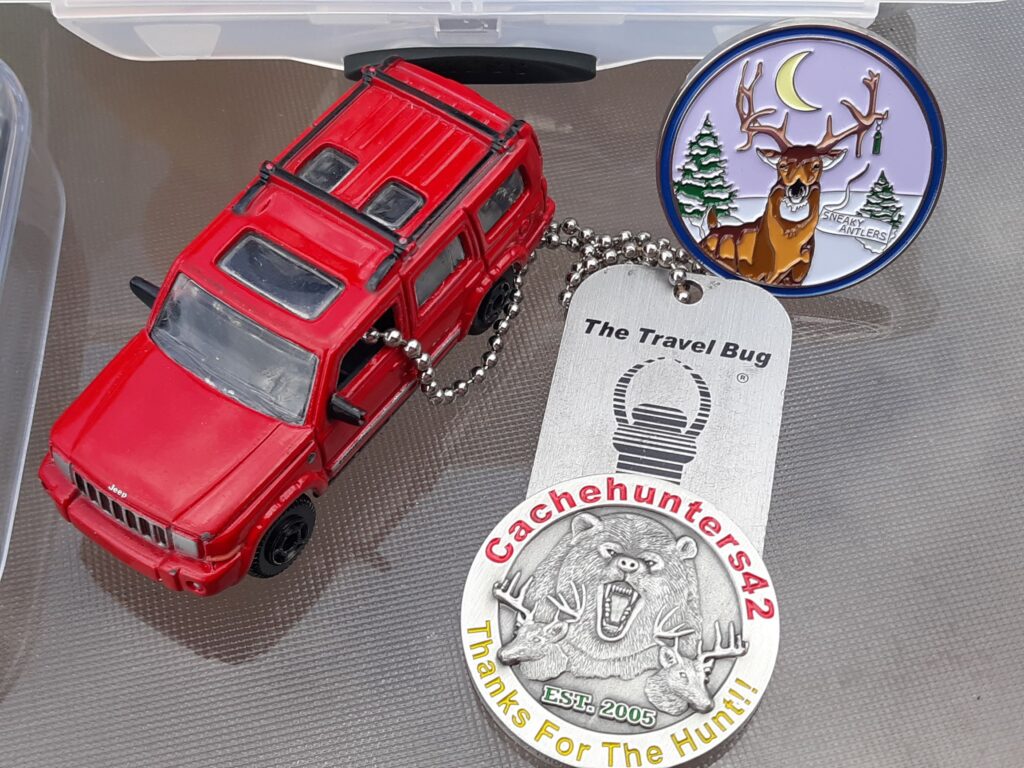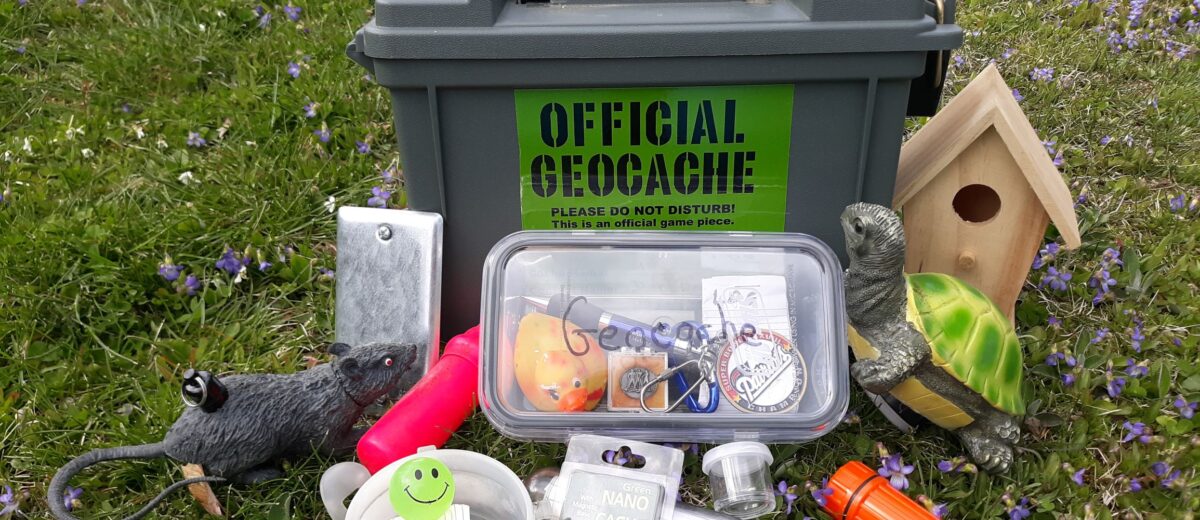Discover Bangor by Playing a Game
Learn to Geocache and Discover our Region
A great way to discover a city’s hidden treasures is to geocache (Jee-o-cash). Geocaching is like a techno game of hide and seek using waterproof containers of various sizes and GPS coordinates to find them.
Geocaching started in the northwest United States in May 2000. There are now more than 3 million geocaches hidden in more than 180 countries with millions of players. Often, they are located in historic or scenic locations taking you to places you might otherwise overlook or miss. There is most likely one near you as you read this!
There are several hundred caches in the Bangor area. From historic places to the City Forest, caches hidden in interesting places will help you discover Bangor and the surrounding area.

Getting Started
- Go to Geocaching.com to create a free account – be ready with a fun geocaching name for yourself or your family
- On the site search the database for geocaches near you or in the location you will be visiting.
- Get a GPS enabled device or smartphone to enter the coordinates given online to take you to the location. (If you are planning to go geocaching while visiting a new location, you may want to test your device and your sleuthing skills before leaving home by searching for a cache near your home.)
- Follow the coordinates to the geocache site using your smartphone or GPS device. Put your device away and start looking high and low for the cache (after a few caches you will develop a sense of good hiding spots and see logical places where the cache may be hidden). The coordinates are usually accurate to within 10-30 feet of the hiding spot. Caches are never buried but they may often be covered with dry leaves, in a tree hollow, on the bottom of a bench, or some other “obvious” spot at the location.
- Once you have found the cache, step away from the hiding place if in a public area where “muggles” may see you so as to not give away the hiding spot, sign the log (bring a pen or pencil just in case the cache doesn’t have one). If there are trinkets and you take one be sure to leave something of equal or greater value. Always leave family-friendly items as this is a family friendly game. Some caches contain trackables that need to moved from cache to cache. If you look on the site for what is in the cache it will tell you if there are trackables and what their mission is, i.e. go to another historic site, or go to another kid-friendly cache, etc. For more on trackables go to https://www.geocaching.com/track/
- Replace the cache exactly as you found it for the next player to find.
- When you get back to a computer, log your find on Geocaching.com. The owner will get a notification that you found their cache once you log your find.
For more information and to see how many geocaches are in a location go to Geocaching.com
Type of Caches
Caches are containers of a variety of sizes. The type of cache will be noted on the site when you look up the coordinates of the cache you want to find. The most common type of cache is a “traditional” which are containers of various sizes from large to nano with at least a logbook and things to trade if the container is large enough. Many caches are micros or nanos which only have a logbook. (Hint: Tweezers are helpful to get the logs out of nanos.)
There are also “virtual” caches, no physical container, that require the finder to post a picture or answer a question when they log their “find”. This will be noted on the site so read the clues and instructions carefully before heading out if you plan to do this type of cache.
More advanced caching involves multi-caches that take you from one coordinate to another before the cache can be found, or mystery or puzzle caches that require you to decode clues or solve a puzzle before determining the coordinates of the cache.
How Difficult is the Cache to Find?
The degree of difficulty is listed in the description of the cache. The difficulty is rated from 1-5 indicating physical and mental difficulty so you will know beforehand and can decide if this is the cache for you. A 1 should be easy to find and easily physically accessible. A 5 star can require special equipment such as a boat, or strenuous hiking or climbing.
The player who hid the cache may leave hints in the description so read carefully before you head out to find a cache. Read through recent logs of other players to see if there are any hints or if they found the case as described.
Be a Good Cacher
Always bring out any trash you find or create, stay on designated paths, don’t disturb sensitive areas, don’t trespass on private property (caches on private property must have permission and it is illegal to hide caches in National Parks so those are always virtual caches), and log your finds so the owner can see if the cache is still safe or if it needs attention.
